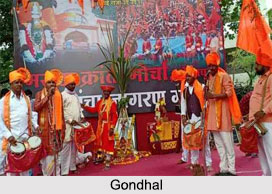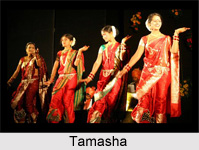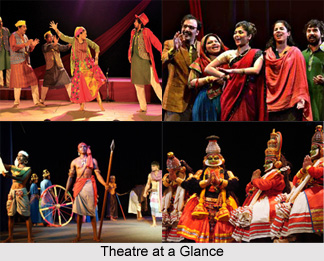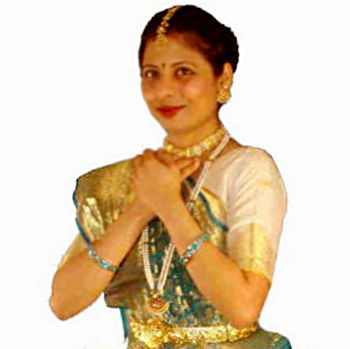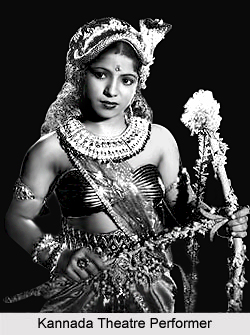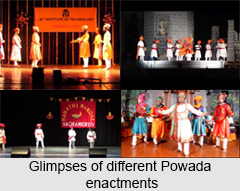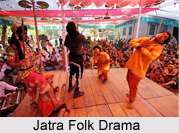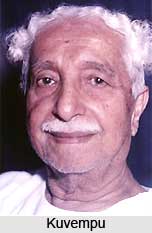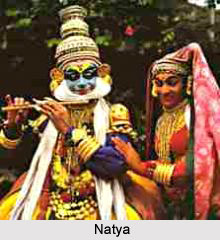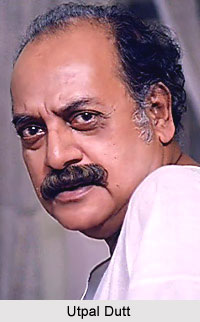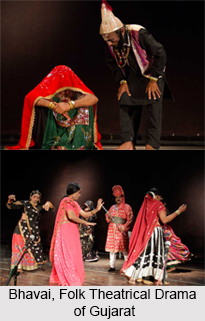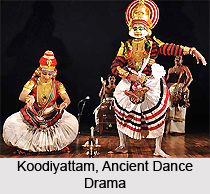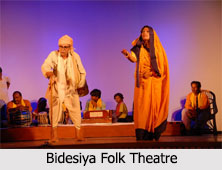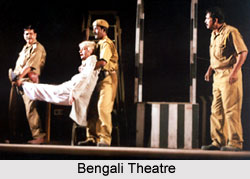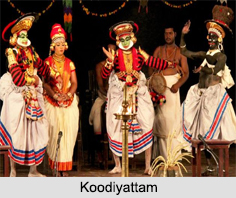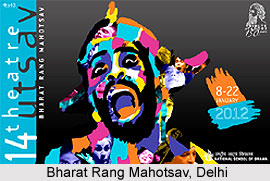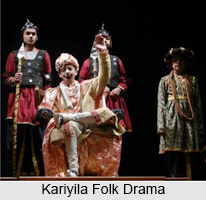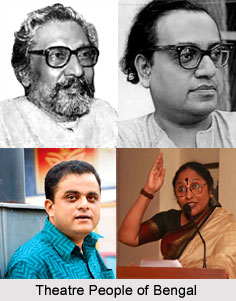Lasya in Natyashastra is a dance form which was taught by Parvati. Lasya relates to the mutual attraction of men and women and is to be performed by one person. It is said that the Lasya is so called because of its shining (Lasana). The subject matter of Lasya also should be suitable. Its theme may have one or many topics and has been mentioned in connection with its different Angas. There are twelve types of Lasyas which are Geyapada, Sthita pathya, Asinapathya, Puspagandika, Pracchedaka, Trimudhaka, Saindhavaka, Dvinvudhaka, Uttamottamaka, Vicitrapada, Uktapratyukta and Bhavita.
In the Geyapada, the heroine is seated in the midst of her musical instruments but the singers go on singing the Geyapada (Sample Song) without playing on the instruments. If a woman sings a song in praise of her beloved, in the posture of sitting, but with the gestures of the various limbs it is also called Geyapada. The Sthita pathya is another type of Lasya which takes place when burning with the fire of love a woman in separation from her lover recites a composition in Prakrita while seated on her seat. The Sthita Pathya should include the earthly cans at the time of dance and of playing of instruments at the beginning and closing of songs.
When the lover or the beloved sits overcome with anxiety and sorrow without caring for any make up or embellishment of the body looking askance is an example of Asinapathya. The Asinapathya should be performed carefully by a woman while she is seated. The Puspagandika type of Lasya takes place if women dressed like a man recites a simple poem in Sanskrit for amusing her female companions. Puspagandika Lasya is adorned with various kinds of metres, and in which singing and playing of instruments are done alternately. The Pracchedaka Lasya takes place where the moon struck women prepare to hasten to the side of their lovers even if they had committed infidelity and done them wrong. An expert in the performance of Lasyas should know that the Pracchedaka relates to the joy of a heroine on seeing the face of the lover in moonlight in a temple or in a mirror and it is the Pracchedaka in which, dance predominates and which is rich in games and is besides adorned with different expressions of passion.
The Trimudhaka Lasya consists of soft words devoid of harshness. It is sung in the Gandhari Jati and should be performed in the proper Marga and with proper number of Kalas with Tala. The Trimudhaka Lasya abounds in manly Bhavas. The Saindhavaka Lasya should be known as a performance without very clear Anga Haras and without many Recakas and it should be in the dialect of Sindhu. Accompanied by instrumental music it should be in an energetic meter. The Dvinvudhaka Lasya should have a theme with more than one set of events and with many meanings and it should relate to manly feelings and should consist of one limb. It should have an auspicious meaning with clear Bhavas and rasas.
In the Uttamottamaka Lasya one should first of all sing the Natkuta and then a Sloka with various meanings. The Uttamottamaka is composed of diverse kinds of Slokas including many Rasas and adorned with the Bhava of Hela (Sportive passion). The Uktapratyukta Lasya is always described as abounding in references to anger and its pacification and it`s always characterised by beautiful dialogues and censuring actions. This is set to music with diverse kinds of ideas implied. If any women burning with the fire of love consoles herself by looking at the portrait of her lover it is called the Vicitrapada Lasya. If a woman in separation, scorched with the fire of love sees her lover in the dream and expresses her feelings and emotional fervour, it is an example of Bhavita.
